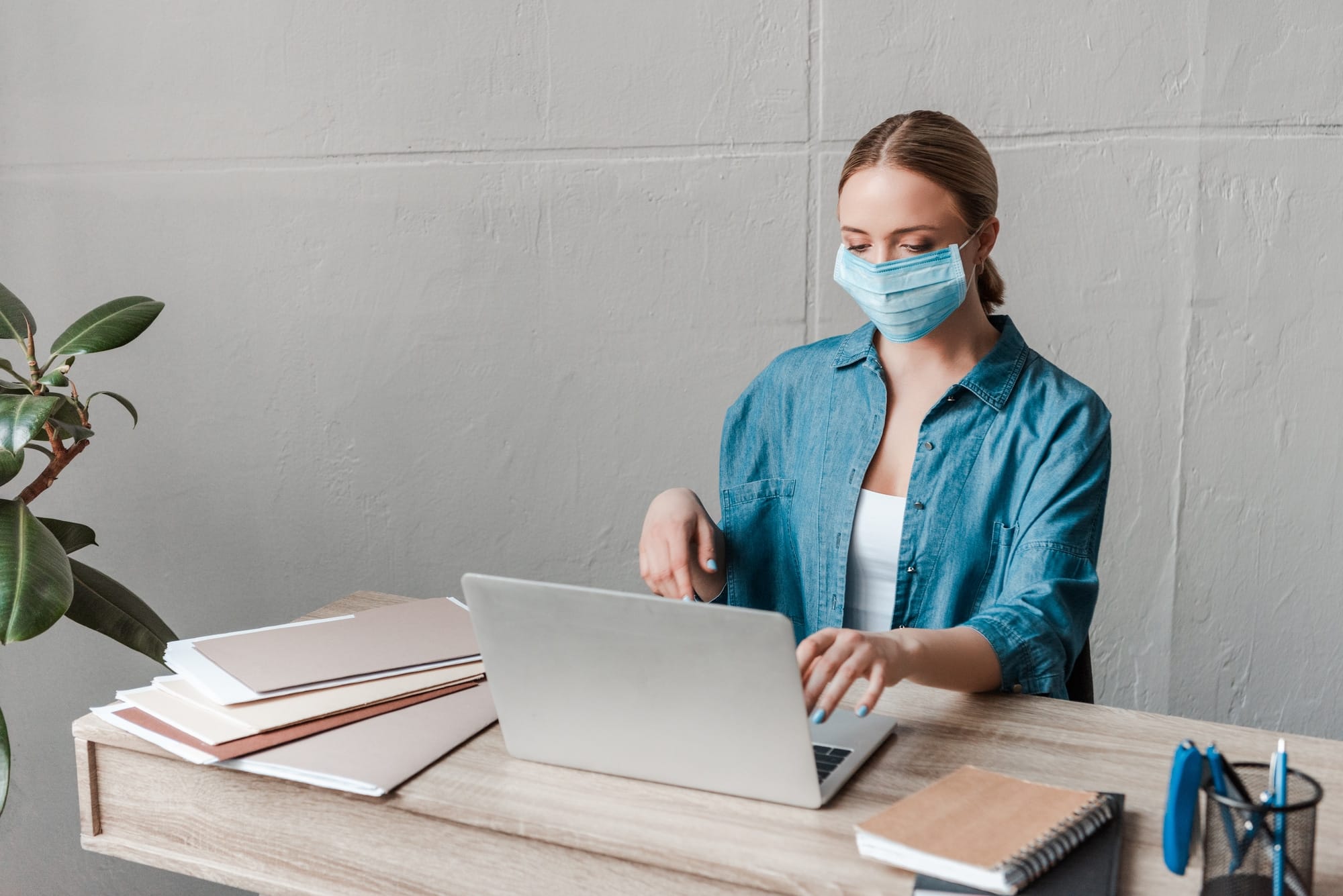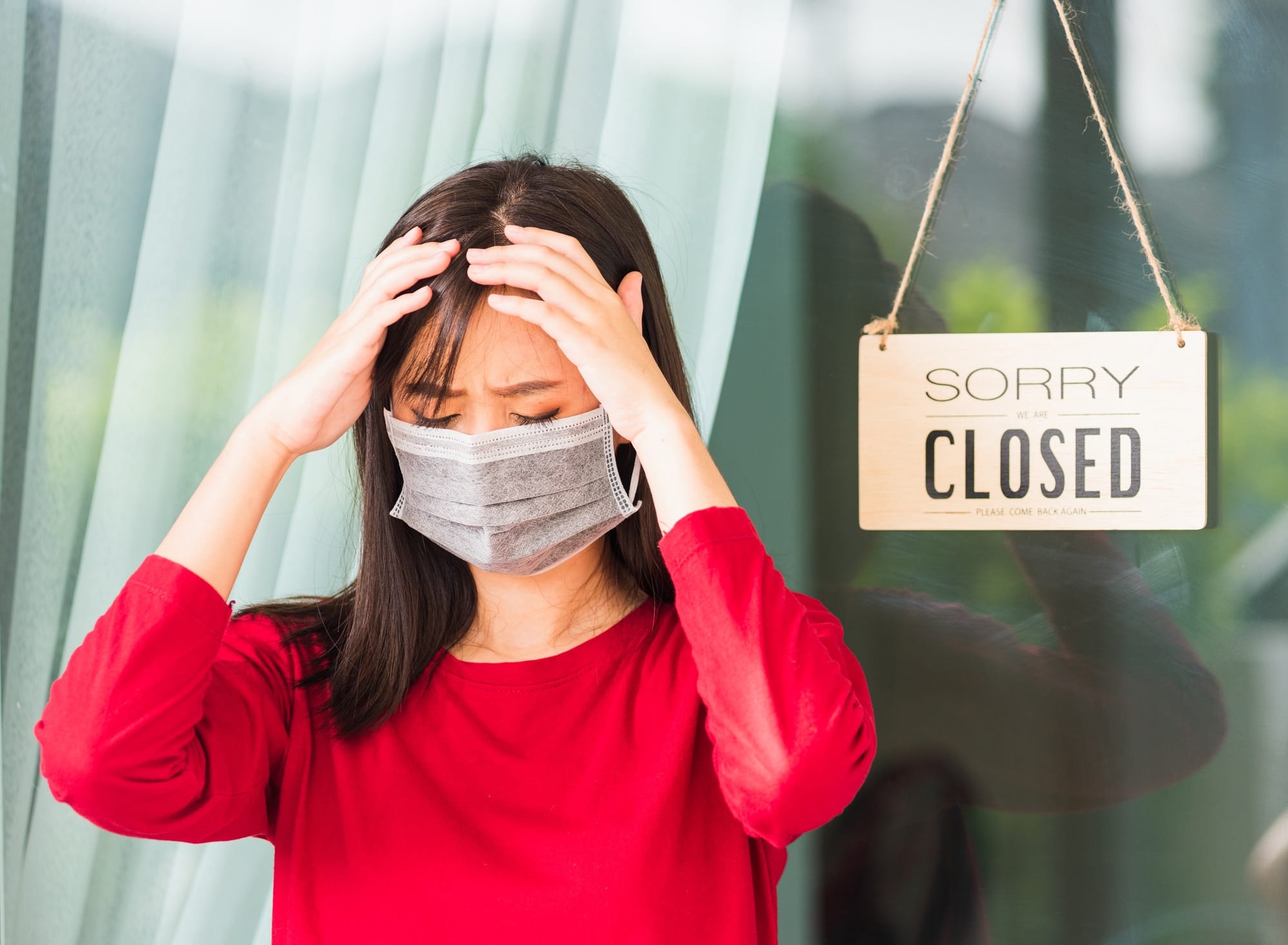COVID-19 SWOT analysis shows that the greatest strength a business can leverage is adaptability and the hardest weakness it must overcome is re-opening safely.
COVID-19 is a once-in-a-century health crisis. If cases in the US continue to rise at the current pace, the number of deaths due to COVID is projected to exceed the death toll for World War II. As businesses struggle to cope with the pandemic, SWOT analysis is a great tool to regain balance. In this COVID-19 SWOT analysis, we’ll look into the following:
- Strength: Positive attributes business can leverage to survive and thrive during and after the pandemic.
- Weakness: Negative aspects businesses need to address to recover and gain traction.
- Opportunity: Helpful circumstances that could help companies get back on their feet.
- Threat: Dangerous situations that companies should avoid or prepare to face.

What are the major strengths during COVID-19?
More than a million people have succumbed to COVID-19. The picture seems bleak. But is there a silver lining to all this? Can any good come out of this once-in-a-century crisis? Well, it’s possible. Some businesses are benefitting from the social, economic, and cultural changes spurred by the pandemic.
- Lean Business: COVID-19 forced businesses to evaluate their priorities. As a result, businesses dropped non-critical projects. Dropping non-critical projects leaves more resources and attention to work that makes the most difference to the business’s bottom line. For instance, fashion retail giant Zara closed half of its stores and spent € 4 billion on transitioning to an online platform. You can read more about it in our SWOT analysis for Zara.
- Switch to Digital: Epidemiologists agree eliminating human contact is a reliable method to contain the spread of the contagion. Thus, people are now digitally performing tasks they would have traditionally done in person.
- E-Commerce: The switch from in-person shopping to digital shopping propelled Amazon to unprecedented growth. And it's not just traditional e-commerce companies that are doing well. Companies making the switch to e-commerce are showing signs of recovery and growth.
- Reduction in Commute: The virus brought business commute in all forms down to a trickle. Most people are now working from home. According to the Wall Street Journal, Americans saved 60 million hours commuting between mid-March and mid-September. The time saved led to 22 million extra hours per workday across the country.
- Flexibility: During the pre-COVID "era," businesses followed rigid timings. Lockdown measures forced businesses to limit in-person work. Without employees having to come to the office, businesses could no longer enforce strict work timings. Thus, the new way of doing business became more flexible.

What are some weaknesses during COVID-19?
COVID-19 puts an end to the normal way of running a business. No business escaped unscathed from the crisis. Although a few businesses are now recovering, they had to overcome crippling weaknesses.
- Layoffs: Restrictions imposed to limit the spread of the coronavirus created severe financial strain on businesses. To cope with stress, many businesses cut-down their workforce. The layoffs crippled many businesses, many of them closing down.
- Closures: Many enterprises saw a dramatic decline in patronage. For instance, the crisis wiped out the cruise industry overnight. Since businesses had fewer people to cater to, the excess infrastructure and logistics became a liability. Thus, to cut losses, many companies closed their outlets.
- Safety Concerns: In the early months of the pandemic, businesses weren't clear on how to open safely. Even after governments relaxed restrictions, businesses didn't have the money to create the environment needed to reopen safely.
- Work-from-Home: Companies extended work-from-home as a privilege. However, with COVID-19 lockdowns in place, companies were compelled to have staff work from home. Working from home made it harder for companies to ensure compliance and accountability. Also, according to Forbes, the employees aren’t taking it well.
- Morale and Mental Health: Financial stresses, combined with social isolation, adversely affected the psyche of the workforce. With no apparent end to the pandemic in sight, uncertainties regarding the future continue to build anxiety and fear.
What are some opportunities during COVID-19?
Adversities come with opportunities. However, it isn’t easy to flip a business model overnight. But those who have the courage and resources to adapt and overcome, these are the opportunities available to them.
- Remote Working: When businesses realized it would take months or perhaps years for the situation to return to normalcy, they leaned towards remote working options. An explosion in the development of cloud-based collaboration tools made the switch possible. Zoom's year-over-year growth of 355% in the second quarter of this financial year best represents the rise of remote working trends.
- Government Stimulus: The US has spent $4 trillion in COVID relief measures. $670 billion has gone to paycheck protection and $884 billion to workers and families. Other governments around the world have committed significant financial resources to revive the economy.
- Policy: In some areas, government policies have stimulated growth. For example, restrictions on in-person shopping have accelerated the growth of online shopping. Amazon reported a 37% year-over-year growth in the third quarter of this financial year.
- Access to Talent: According to the Harvard Business Review, the COVID crisis has created an unprecedented opportunity to hire great talent. The opportunity comes from layoffs, furloughs, and pay cuts hitting talented workers. In response to this trend, major hiring firms have seen an increase of 9% to 15% in the last few months.
- Up Skilling: Amazon has invested $60 million into Career Choice, its upskilling program. The program helps employees upskill so they can pursue their career aspirations. So far, 30,000 people have put themselves through the program. Also, people who have lost their jobs because of the pandemic are seeing this as the best time to invest in professional development courses.

What is the biggest threat during COVID-19?
The worst of the pandemic is not yet over. Lurking uncertainties continue to force business owners to navigate blindly across the landscape. As they conduct day-to-day operations, these are the factors they must constantly monitor and adapt to.
- Lockdowns: The first lockdown in the UK shrank its GDP by 25%. With the second wave of infections surging, the country is heading for a second lockdown. 17% of SME business owners say they will not survive a second lockdown. Unfortunately, the pandemic may leave the UK government with no other choice. Even worse, this situation isn't limited to the UK.
- Policy: While government policies have sparked the growth of online shopping businesses, the same policies have doomed other sectors. For example, the travel ban caused Ryanair to ground 99% of its fleet. Also, in New York, the government has capped indoor dining to 25% of the restaurant's capacity.
- Vaccine Development: Without a vaccine, business-as-usual is nearly impossible. Thus, the timeline to normalcy heavily relies on the development, testing, and distribution of a vaccine. The scientific community predicts it could take as long as the first quarter of 2022 for things to return to the pre-COVID state.
- Isolationism: A rapidly spreading contagion is a good enough reason to put the country’s need ahead of international allies. However, the "always look out for number one" policy comes at the price of international relationships.
- Drop in Purchasing Power: According to a PEW survey, 44% of the people in the low-income group had to use their savings to pay the bills. And 35% of them got food from food banks. With people struggling to make ends meet, businesses catering to low and middle-income groups are suffering.
COVID-19 SWOT Analysis: Conclusion
From our COVID-19 SWOT analysis, we know that the greatest strength a business can leverage is adaptability. At the same time, the most pressing weakness it must overcome is re-opening safely.
Looking at the overarching business landscape, policy and regulation continue to be a looming threat. However, emerging trends in how to work bring new opportunities for collaboration and hiring.
If you’re a business owner, manager, or someone interested in the business world, SWOT analysis is a wonderful tool to develop your problem-solving skills. If you would like to know what is SWOT analysis and how to do it, please read our guide and review our SWOT analysis template. Make sure you look at all our SWOT analysis examples.


